This article was medically reviewed by Jonas DeMuro, MD. Dr. DeMuro is a board certified Pediatric Critical Care Surgeon in New York. He received his MD from Stony Brook University School of Medicine in 1996. He completed his fellowship in Surgical Critical Care at North Shore-Long Island Jewish Health System and was a previous American College of Surgeons (ACS) Fellow.
There are 8 references cited in this article, which can be found at the bottom of the page.
This article has been viewed 265,455 times.
Stitches are usually performed on deep cuts or wounds or following an operation, and they require proper upkeep and daily cleaning to ensure you do not get a scar from the stitches. Everyone’s skin heals differently and sometimes you are left with stitch marks or scarring due to stitches; however, there are several methods you can try to reduce the appearance of the stitch marks and prevent any long-term scarring.
Steps
Using Home Treatment
-
1Keep the stitch marks covered and clean during the day. Though you may think allowing your stitches to breathe by keeping them uncovered will help to speed up healing, doing this can delay healing by as much as 50 percent. Moisture and wetness can prevent a scab from forming and lead to prolonged healing or an infection. Use a dry, sterile bandage to cover the stitch marks as they heal.[1]
- Your doctor may give you an antibiotic ointment or advise you to use an over the counter ointment like Neosporin. This will help to prevent infection and encourage your stitch marks to heal fast.[2]
- Use a fresh bandage every time you apply the ointment to the marks. You can switch to plain petroleum jelly after a week of using the ointment to encourage new skin to grow over the stitch marks.
-
2Use silicone pads to help the marks heal properly. Apply constant pressure to the stitch marks by using silicone sheet pads, such as Curad Scar Therapy Cosmetic Pads, ReJuveness Pure Silicone Sheets, and Syprex scar sheets. This can help the marks to heal and flatten any scarring.[3]
- Many silicone pads are made to allow you to cut them to fit the shape of your stitch marks.
Advertisement -
3Do not apply vitamin E or hydrogen peroxide to the marks. Despite common belief, vitamin E has been shown by studies to prevent wounds from healing, rather than encourage healing. Some people may also develop an allergic reaction to vitamin E. Put medicated ointment or antibiotic cream on the stitch marks instead of vitamin E gel.[4]
- Though applying hydrogen peroxide to open cuts or marks can help sanitize the area, hydrogen peroxide has been known to destroy new skin cell growth and slow down your body’s healing process.
-
4Protect the stitch marks from the sun by using sunscreen. The sun’s ultraviolet light can have a damaging effect on your stitch marks and slow down the healing process. Lather up your skin, including your stitch marks, with sunscreen every morning before you go outside. [5]
- Use a broad spectrum sunscreen with SPF 30.
-
5Massage the area once the stitch marks have healed. Massaging your healed stitch marks will help to break down any bands of collagen that have attached to the underlying tissue.[6]
- You should gently massage the area with lotion in a circular motion for 15 to 30 seconds several times a day.
Using Professional Treatment
-
1Get your stitches removed within a week. Talk to your doctor about removing the external stitches before they leave track marks, which are the small bumps that appear on either side of the incision. If possible, have your doctor remove the external stitches after one week to prevent any permanent scarring.
-
2Talk to your doctor about laser treatments. For a more serious professional option, consider using targeted laser treatment to remove the stitch marks or stitch scarring. Using laser treatment on fresh scars, within six to eight weeks of the injury, can lead to a more effective treatment and removal of the scar. There are two types of laser treatments:[7]
- Pulsed dye lasers: This is a non-ablative laser treatment that uses an intense, targeted burst of light. The heat is then absorbed by the blood vessels in your skin and can help to improve the texture and thickness of scars. It can also reduce any redness around the scar.
- Fractional ablative lasers: This treatment pokes small holes into the scar. This stimulates collagen production and can remodel the scar to appear less noticeable. This type of laser treatment is recommended for shallow scars.
- Most laser treatments will require multiple treatment sessions and can cost between $300 to $600 per a session.
-
3See your doctor if the stitch marks become red, irritated, or swollen. If you experience any of these symptoms, as well as fever and increased pain around the stitch marks, you should go see your doctor. The stitch marks may be infected or you may have had an allergic reaction to the antibacterial cream.[8]
- Your doctor will need to examine and treat the stitch marks to prevent further infection or complications.
References
- ↑ https://www.healthywa.wa.gov.au/Articles/S_T/Suture-care
- ↑ http://www.aafp.org/afp/2004/0601/p2647.html
- ↑ https://www.ncbi.nlm.nih.gov/pmc/articles/PMC2918339/
- ↑ https://journals.lww.com/plasreconsurg/Citation/1997/12000/Vitamin_E_and_Wound_Healing.43.aspx
- ↑ http://www.emedicinehealth.com/removing_stitches/page4_em.htm#after_removing_stitches_procedure
- ↑ https://myhealth.alberta.ca/breast-cancer-surgery/at-home/scar-massage
- ↑ https://www.aad.org/public/cosmetic/scars-stretch-marks/laser-treatment-scar
- ↑ http://www.emedicinehealth.com/removing_stitches/page5_em.htm#when_to_seek_medical_care
About This Article
To get rid of stitch marks, cover them with a clean, dry bandage each day, which speeds up the healing process. If your doctor has prescribed you with an ointment, put a bandage over the area after applying the ointment to help keep the marks clean. Another way to speed up healing and reduce scarring is to apply silicon pads to your stitch marks. When you go out in the sun, apply a strong sunscreen to your stitch marks, since sunburn will damage your skin more. Avoid using untested treatments, such as vitamin E and hydrogen peroxide, since they actually prevent wounds from healing. For tips on how to discuss alternative treatment options with your doctor, keep reading!

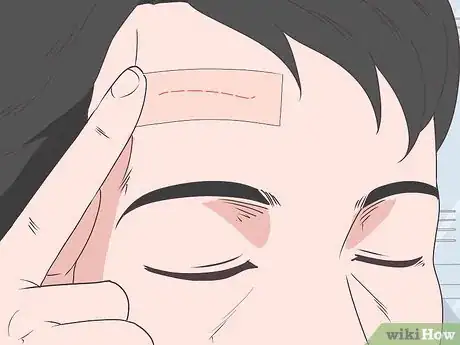

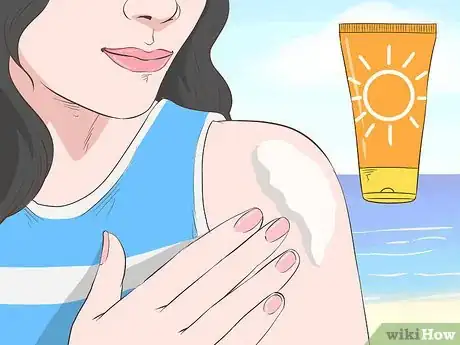

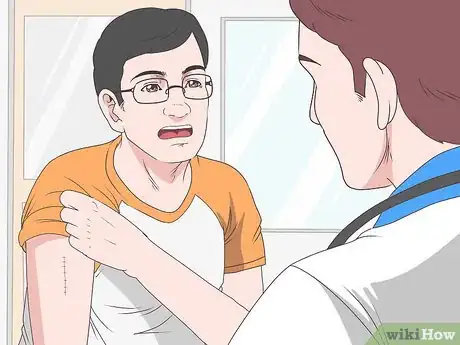
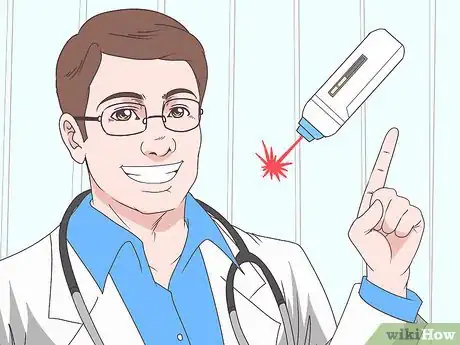

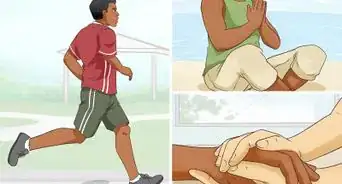
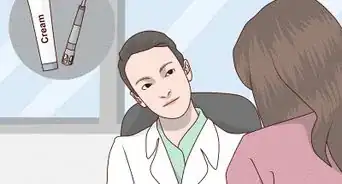

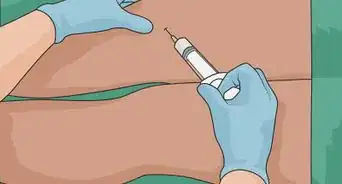

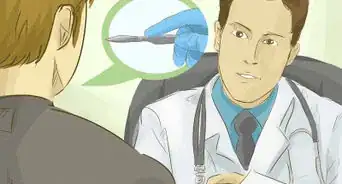
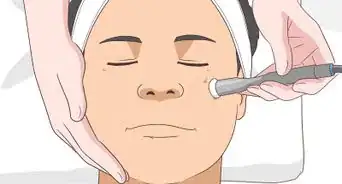
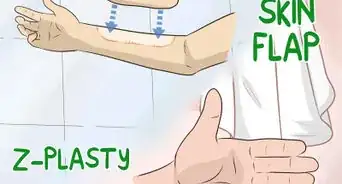

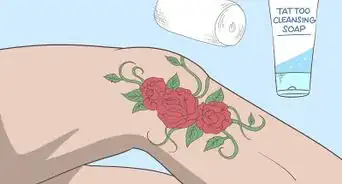
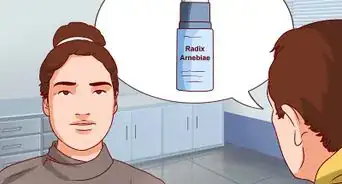
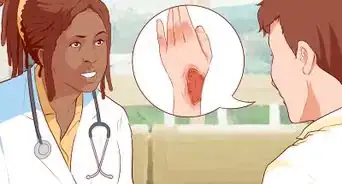









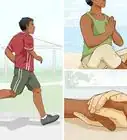

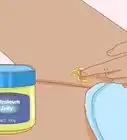
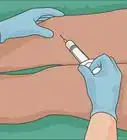



































Medical Disclaimer
The content of this article is not intended to be a substitute for professional medical advice, examination, diagnosis, or treatment. You should always contact your doctor or other qualified healthcare professional before starting, changing, or stopping any kind of health treatment.
Read More...